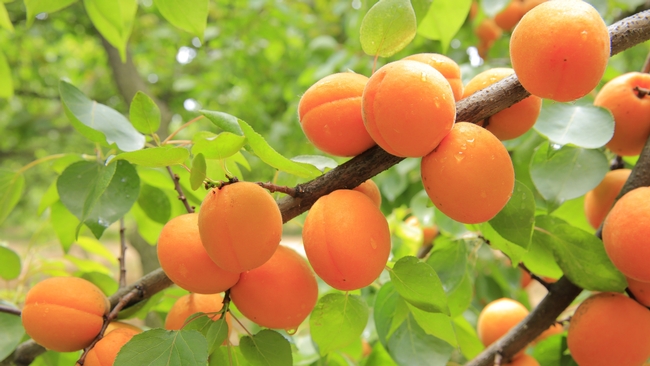- Author: Jutta Thoerner
- Editor: Noni Todd
Apricots
By Jutta Thoerner UCCE Master Gardener
Prunus armeniacum
Size of Tree: 6 to 35 feet high, depending on rootstock
Bloom description and season: Apricot blossoms have five bright white petals that can sometimes be tinged with pink. Blooming time is in the spring.
Pruning needs: needs to be pruned in summer.
Exposure: full sun.
Water needs: needs regular watering to produce ample fruit
Apricots are member of the rose family and the origin of the apricot is disputed. Theories have its beginnings in China, Armenia or Japan. We do know it was domesticated more than 4000 years ago. Then English and Spanish settlers brought it to North America in the 1700's. Apricots grow best in a light, loamy soil in full sun. They produce fruit for about 25 years. Reasons why apricot trees fail to produce fruit include:
1. Blooms have been destroyed by late frost or heavy rains, preventing pollination and fruit set. Planting a mid or late blooming tree will mitigate this issue for the most part.
2. The tree did not receive enough water during bloom or fruit set. Apricots need one inch of water weekly for a successful fruit set.
3. The apricot tree is an alternate or 3 year alternate varietal for fruit bearing. Today's industry has a wide selection on yearly bearing apricot trees to choose from.
4. No fruiting wood to bear fruit on. Apricots bear fruit on spurs which need to be pruned to force new growth. If you have not pruned the spurs in four years or more, poor or no fruit set will result.
If you love apricots, consider a semi dwarf or dwarf rootstock for your yard. By following some of the tips, selecting the perfect tree for your needs is easy. Apricot trees don't require a lot of space and they will give you many years of gorgeous spring blooms and juicy apricots. You'll enjoy eating them, as the astronauts did on their Apollo mission to the moon.




